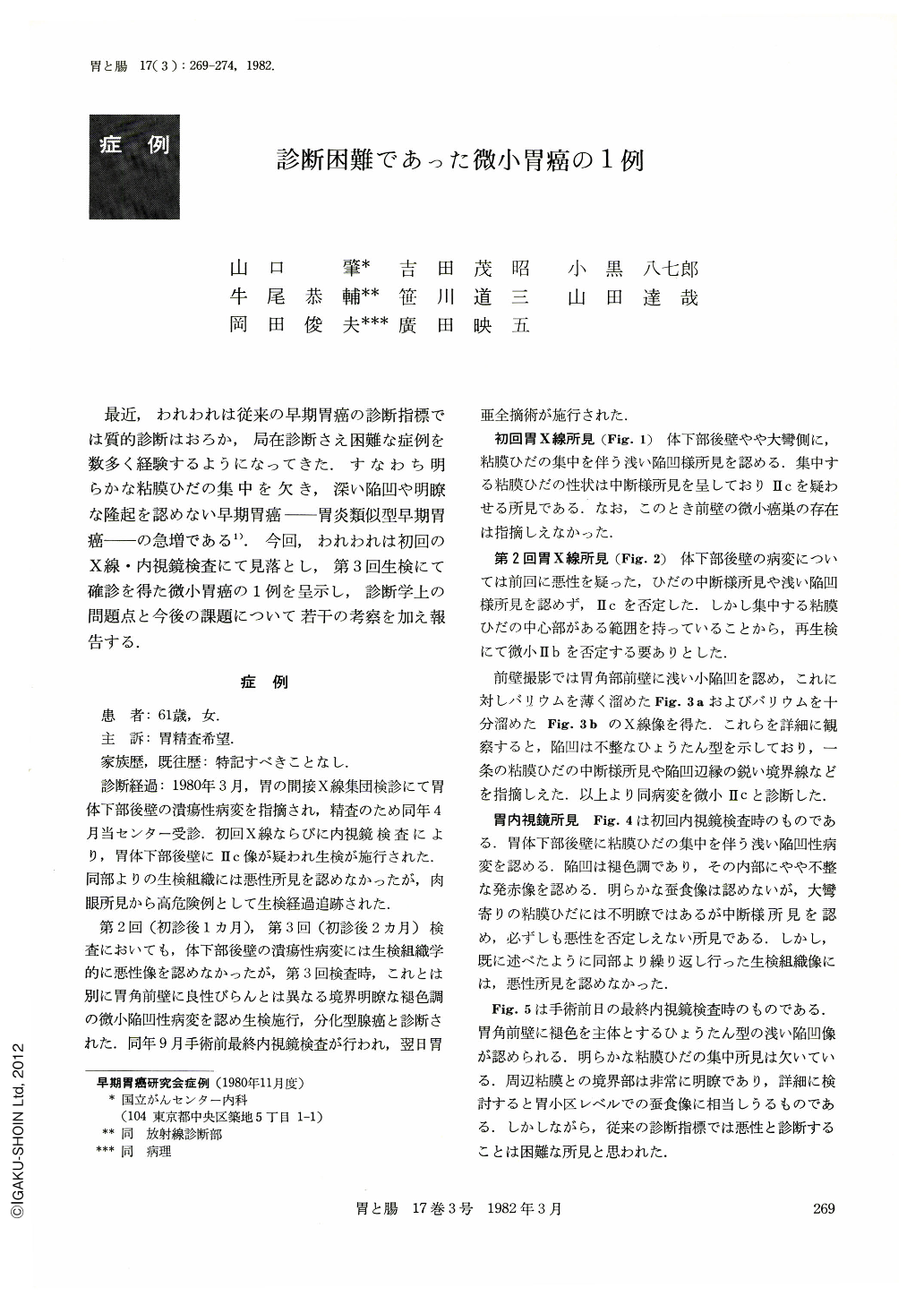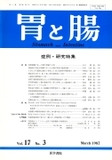Japanese
English
- 有料閲覧
- Abstract 文献概要
- 1ページ目 Look Inside
最近,われわれは従来の早期胃癌の診断指標では質的診断はおろか,局在診断さえ困難な症例を数多く経験するようになってきた.すなわち明らかな粘膜ひだの集中を欠き,深い陥凹や明瞭な隆起を認めない早期胃癌─胃炎類似型早期胃癌─の急増である1).今回,われわれは初回のX線・内視鏡検査にて見落とし,第3回生検にて確診を得た微小胃癌の1例を呈示し,診断学上の問題点と今後の課題について若干の考察を加え報告する.
We presented a case of a 61-year-old woman with minute gastric carcinoma which had been diagnosed after five times of x-ray and endoscopic examinations performed within three months. The lesion finally detected was on the anterior wall of incisura angularis and its size was less than 5 mm (4×3 mm).
Roentgenographically and endoscopically, no ulcerative findings (e.g. converging folds) and no polypoid appearance were detected on this lesion and it was only seen as a simply shallow depression with vague discoloration. The above appearance was quite difficult to be diagnosed as malignant only from the conventional macroscopic criteria of early gastric cancer.
In recent years, the macroscopic appearance of early gastric cancer detected has changed to be much flatter. Especially those which do not show any converging folds or polypoid appearance have been increasing rapidly. We call them “early cancer with gastritis-like appearance”. They are difficult not only to be diagnosed as malignant but to be detected as gastric abnormalities, whatever is their size. According to our prior reports, the macroscopic findings of early cancer with gastritis-like appearance were summarily expressed as “mucosal irregularities”, that was to say, the irregularities in erythematous change, granular lesion, discoloration and simply shallow depression of the surface mucosa. The minute cancerous lesion presented corresponds roentgenographically and endoscopically to the above category.
On the posterior wall of the lower body, apart from the cancerous lesion, the patient had an ulcerative lesion which was macroscopically suspected of malignancy. In the previous examinations, most of our attention had been paid on this ulcerative lesion. But no malignant cell was detected histologically in the serial examinations with biopsy. After four negative examinations, cancerous lesion was finally detected on another site of the stomach.
With retrospective and precise observation on the endoscopic films taken at the initial examination, however, faint abnormality such as a minute discoloration could be checked on the same site with the final cancerous lesion. At that time, the above finding was not recognized as abnormal and the cancerous lesion had been overlooked without taking close-up observation.
The above may show that in the survey of the stomach both precise observation (visual diagnosis) and fair photograph (close-up view) are indispensable especially in case of the detection of early cancer with gastritis-like appearance. All through the examination we must pay attention on the localized mucosal irregularities. And if it be found, the malignancy should be checked by correct biopsy.

Copyright © 1982, Igaku-Shoin Ltd. All rights reserved.


